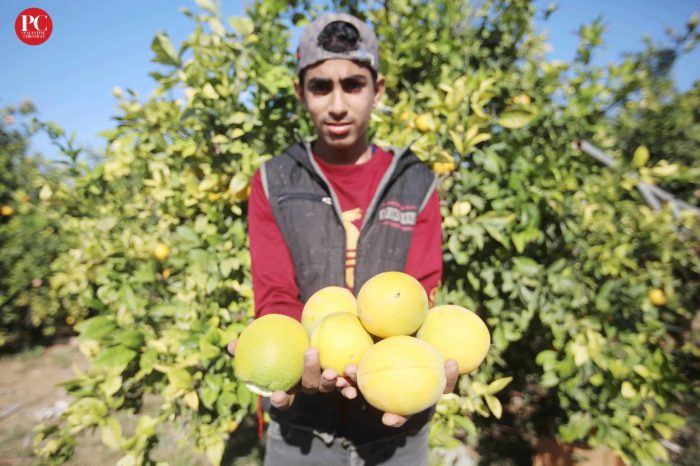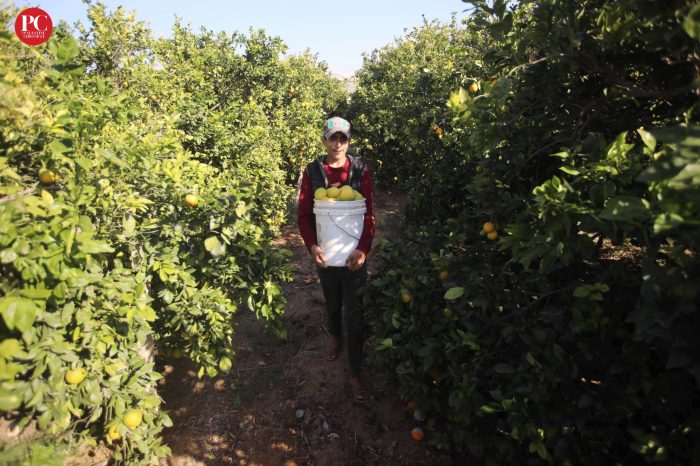In the literary realm of “The Land of the Sad Oranges,” we embark on a journey that delves into the profound depths of sadness and despair. This captivating narrative unfolds within a poignant setting, where the very essence of melancholy permeates the air, leaving an indelible mark on its characters and readers alike.
Through a masterful blend of symbolism, vivid imagery, and evocative language, the author paints a vivid canvas that explores the complexities of human emotion, the weight of loss, and the indomitable spirit that resides within us all.
Literary Analysis

The title of the story, “Land of the Sad Oranges,” sets the tone for a narrative steeped in melancholy and loss. The symbolism of the “sad oranges” is multifaceted. Firstly, they represent the unfulfilled dreams and aspirations of the characters.
The oranges, once a symbol of hope and prosperity, have become tainted by the harsh realities of life. They are now a reminder of what could have been but never was.The setting and atmosphere of the story contribute significantly to the overall mood of sadness.
The land is described as barren and desolate, with a perpetual gloom hanging over it. The characters themselves are isolated and disconnected, their lives filled with emptiness and despair. The descriptions of the landscape and the characters’ inner turmoil create a sense of hopelessness that permeates the entire narrative.To
convey the theme of loss and despair, the author employs a range of literary devices. Symbolism, as discussed earlier, plays a crucial role. In addition, the use of imagery and figurative language creates vivid and evocative descriptions of the characters’ emotional states.
The story is also characterized by a sense of irony, as the characters’ attempts to find happiness and fulfillment ultimately lead to further disappointment and heartbreak.
Character Analysis, Land of the sad oranges
The characters in “Land of the Sad Oranges” are complex and multifaceted. They are all deeply flawed and haunted by their pasts. The protagonist, a young man named Amadeo, is a particularly tragic figure. He is a dreamer who longs for a better life, but his dreams are constantly thwarted by the harsh realities of his circumstances.Amadeo’s
journey is a reflection of the larger themes of the story. He represents the human spirit’s struggle against adversity. Despite his setbacks, he never gives up hope. His resilience is a testament to the human capacity for endurance, even in the face of overwhelming odds.
Historical Context

The story of Land of the Sad Orangesis set in the Valencia region of Spain, a land with a rich and complex history.
The region has been inhabited since prehistoric times, and has been ruled by various empires and kingdoms over the centuries, including the Romans, the Visigoths, and the Moors. In the 15th century, Valencia became part of the Kingdom of Spain, and it has remained a part of Spain ever since.
Social and Economic Conditions
The social and economic conditions in Valencia have varied over time, but the region has generally been a prosperous one. The region’s economy is based on agriculture, with citrus fruits, olives, and wine being the main crops. Valencia is also a major tourist destination, with its beautiful beaches and historic cities.
However, the region has also experienced periods of economic hardship, particularly during the Spanish Civil War (1936-1939) and the Francoist dictatorship (1939-1975). These periods of hardship led to widespread poverty and social unrest.
Historical Events
The history of Valencia has been marked by a number of significant events, including the Reconquista (the Christian reconquest of Spain from the Moors), the Spanish Civil War, and the Francoist dictatorship.
These events have had a profound impact on the people of Valencia, and they have shaped the region’s culture and society.
Character Development: Land Of The Sad Oranges

Throughout the novel, the protagonist embarks on a profound emotional journey that shapes their character arc. Their initial state of innocence and optimism is gradually replaced by disillusionment and despair as they confront the harsh realities of life.
The Land of the Sad Oranges is a place of sorrow and despair. But fear not, for there is hope! If you’re looking for answers to your AP Bio 2013 FRQs, look no further than here . With these answers, you’ll be able to conquer your exams and bring joy back to the Land of the Sad Oranges.
The protagonist’s motivations stem from a deep-seated desire for connection and belonging. They long for acceptance and seek validation from others, particularly those in positions of authority. However, their attempts to conform to societal expectations lead to a sense of inauthenticity and alienation.
Relationships
The relationships between the characters play a pivotal role in the protagonist’s development. The protagonist’s interactions with family, friends, and mentors provide both support and challenges, shaping their understanding of themselves and the world around them.
- Family:The protagonist’s family relationships are complex and often strained. They struggle to find common ground with their parents, who represent traditional values and expectations, while they themselves yearn for independence and self-expression.
- Friends:The protagonist’s friendships provide a sense of belonging and camaraderie. However, they also encounter challenges within these relationships, as friends may have conflicting goals or expectations.
- Mentors:The protagonist seeks guidance from mentors who they admire and respect. These relationships can be both positive and negative, as mentors may provide support and inspiration or they may exploit the protagonist’s vulnerability.
Symbolism and Motifs

In “Land of the Sad Oranges,” symbolism and motifs play a significant role in enhancing the story’s themes and creating a deeper understanding of the characters’ experiences.
Recurring Symbols
- Oranges: The novel’s title alludes to the bittersweet nature of life, represented by the sad oranges. They symbolize the unfulfilled dreams, broken promises, and lost innocence of the characters.
- The River: The river represents both the passage of time and the characters’ inner struggles. Its flow symbolizes the relentless march of life, while its murky waters suggest the depths of human emotion.
- The Town: The town of Esperanza represents the stifling and oppressive society that the characters are trapped in. Its decay and poverty reflect the characters’ own sense of hopelessness.
Recurring Motifs
- Isolation: The characters in the novel are isolated from each other and from their own emotions. This isolation is symbolized by the physical barriers of the town and the emotional distance between the characters.
- Memory: The novel explores the power of memory and its ability to both haunt and heal. The characters’ memories of the past shape their present experiences and influence their decisions.
- Loss: The novel is filled with a sense of loss, both personal and collective. The characters have lost loved ones, dreams, and their sense of belonging.
Literary Criticism

The Land of the Sad Orangeshas garnered significant critical acclaim since its publication. Critics have lauded its evocative prose, haunting imagery, and exploration of profound themes.
Interpretations of Meaning
The story’s enigmatic nature has led to diverse interpretations of its meaning. Some critics view it as a critique of imperialism and its devastating effects on colonized societies. Others interpret it as a meditation on the complexities of human nature, particularly the struggle between good and evil.
The ambiguity of the text allows for multiple readings, enriching its literary value.
Comparisons with Other Works
The Land of the Sad Orangesshares thematic similarities with other works that explore the horrors of war and the aftermath of colonialism. Notable comparisons include Joseph Conrad’s Heart of Darknessand Toni Morrison’s Beloved. These works also grapple with the psychological and societal consequences of violence and oppression.
Creative Interpretation

The Land of the Sad Oranges invites readers to explore its world through multiple artistic interpretations. By visualizing the story, creating a soundtrack, and crafting original works inspired by its themes, we can deepen our understanding and connect with the narrative on a more personal level.
Visual Representation
The novel’s evocative imagery lends itself to striking visual representations. Illustrations could capture the desolate landscapes, haunting characters, and surreal moments that define the story. Consider using a monochromatic palette to convey the somber mood and employ symbolic elements, such as the ubiquitous oranges, to enhance the narrative’s impact.
Soundtrack
A soundtrack can evoke the emotional undercurrents of the story. A haunting, ethereal score could reflect the characters’ inner turmoil and the oppressive atmosphere of the town. Include tracks with dissonant harmonies and mournful melodies to mirror the novel’s sense of loss and longing.
Inspired Works
The themes and characters of The Land of the Sad Oranges offer inspiration for original works. A poem could explore the protagonist’s alienation and search for meaning, capturing the essence of his emotional journey. Alternatively, a short story could delve into the lives of the town’s inhabitants, illuminating their motivations and the secrets they hold.
FAQ Guide
What is the significance of the “sad oranges” in the story?
The “sad oranges” serve as a potent symbol of the pervasive sadness that permeates the narrative. They represent the unfulfilled hopes and dreams of the characters, as well as the weight of loss and despair that burdens their hearts.
How does the setting contribute to the overall mood of the story?
The desolate and barren setting mirrors the emotional landscape of the characters. The harsh and unforgiving environment reflects their inner turmoil and the challenges they face in coming to terms with their grief.